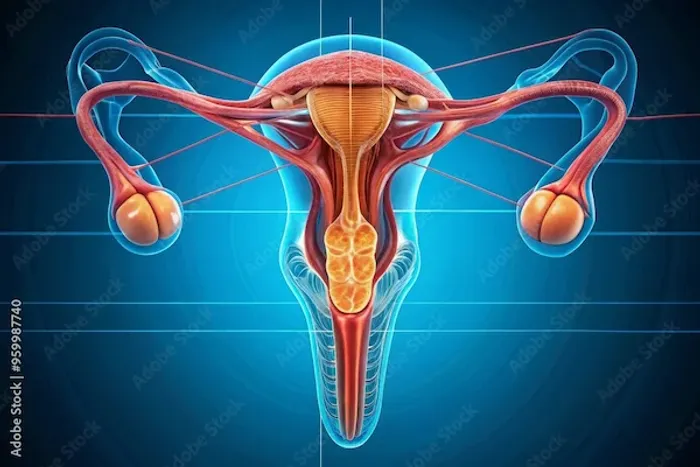Anterior and Posterior Placenta: Differences and Considerations
Learn the differences between anterior and posterior placenta positions in pregnancy. Understand how each may affect baby movement, ultrasounds, and delivery, plus tips for a healthy pregnancy.

Written by Dr. Shaik Abdul Kalam
Reviewed by Dr. Rohinipriyanka Pondugula MBBS
Last updated on 24th Aug, 2025

Pregnancy is a beautiful journey filled with excitement, but it can also bring many questions, especially when medical terms like anterior and posterior placenta come up. If you’ve heard these terms during an ultrasound and wondered what they mean, don’t worry—you’re not alone! This article will explain the differences between anterior and posterior placentas, how they may affect your pregnancy, and what you should keep in mind.
What Is the Placenta?
The placenta is a vital organ that develops during pregnancy and provides oxygen, nutrients, and antibodies to your growing baby. It also removes waste products from the baby’s blood. The placenta attaches to the wall of the uterus, and its position can vary—either at the front (anterior), back (posterior), top (fundal), or side (lateral) of the uterus.
Anterior Placenta vs. Posterior Placenta: Key Differences
1. Location
Anterior Placenta: Attached to the front wall of the uterus, closest to your belly.
Posterior Placenta: Attaches to the back wall of the uterus, closer to your spine.
2. Feeling Baby’s Movements
Anterior Placenta: Since the placenta acts as a cushion between the baby and your belly, you may feel movements a little later (usually after 20-24 weeks), and they may feel softer.
Posterior Placenta: Movements are often felt earlier (around 16-20 weeks) and may be stronger since there’s less cushioning.
3. Ultrasound and Monitoring
Anterior Placenta: Sometimes makes it slightly harder to see the baby clearly on ultrasound, especially in early pregnancy.
Posterior Placenta: Generally allows for clearer ultrasound images since the baby is closer to the front.
4. Labour and Delivery
In most cases, the placenta’s position (anterior or posterior) does not affect labour or delivery. However, if the placenta is low-lying (near the cervix), it may require special attention (called placenta previa). Your doctor will monitor this through ultrasounds.
Does the Placenta Position Affect Your Health or Baby’s Health?
Both anterior and posterior placenta positions are normal and do not usually cause complications. However, there are a few things to consider:
Anterior Placenta and C-Section: If you have a planned C-section, an anterior placenta might make the procedure slightly more complex, but doctors are well-trained to handle this.
Posterior Placenta and Back Pain: Some women with a posterior placenta report more back discomfort, but this varies from person to person.
Consult a Top Gynaecologist
Tips for a Healthy Pregnancy with Anterior or Posterior Placenta
1. Monitor Baby’s Movements:
If you have an anterior placenta, don’t worry if movements feel faint at first.
After 28 weeks, track your baby’s kicks daily—any significant decrease in movement should be reported to your doctor.
2. Stay Active:
Gentle exercises like walking or prenatal yoga can help with circulation and comfort.
3. Sleep Comfortably:
Sleeping on your side (especially the left side) improves blood flow to the baby.
4. Eat a Balanced Diet:
Include iron-rich foods (spinach, lentils) to support placenta health.
Stay hydrated to help with amniotic fluid levels.
5. Attend Regular Check-ups:
Ultrasounds will track the placenta's position and the baby’s growth.
When to See a Doctor
Most placenta positions are harmless, but consult your doctor if:
You notice a sudden decrease in the baby’s movements.
You experience bleeding, severe pain, or contractions.
You have a history of placenta-related complications.
If you have concerns about your placenta position or pregnancy health, you can easily book a
consultation with an obstetrician on Apollo 24|7 for personalised advice.
Final Thoughts
Whether you have an anterior or posterior placenta, both are normal variations in pregnancy. The key is to stay informed, monitor your baby’s well-being, and maintain regular prenatal care. Every pregnancy is unique, so trust your body and reach out to your healthcare provider whenever you have questions.
Consult a Top Gynaecologist
Consult a Top Gynaecologist

Dr. Mona Yadav
Obstetrician and Gynaecologist
19 Years • MBBS, MD (Obstetrics & Gynaecology)
Dombivli
Nulife multispeciality, Dombivli

Dr. Parul Sharma
Obstetrician and Gynaecologist
8 Years • MBBS, MS (Obstetrics & Gynaecology)
New Delhi
THE DOCTORS NESST, New Delhi

Dr. Asha Rani Singh
Obstetrician and Gynaecologist
24 Years • MBBS DGO
Delhi
Dr Asha Rani Singh Clinic, Delhi
Dr. K Anusha
Obstetrician and Gynaecologist
4 Years • MBBS, DGO
Yemmiganur
SRINIVASAA HOSPITAL, Yemmiganur

Dr. Shyamala Devi
Obstetrician and Gynaecologist
38 Years • MBBS, MS Obstetrics & Gynaecology
Vijayawada
Sri Shivshakti Nilayam, Vijayawada




